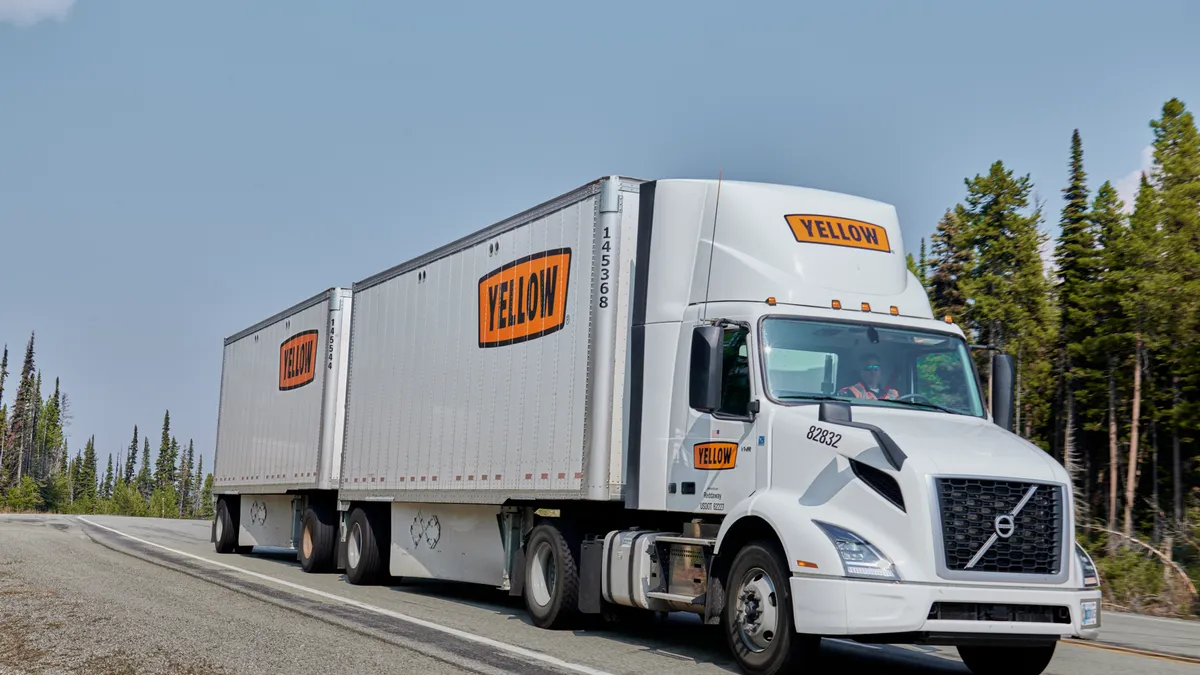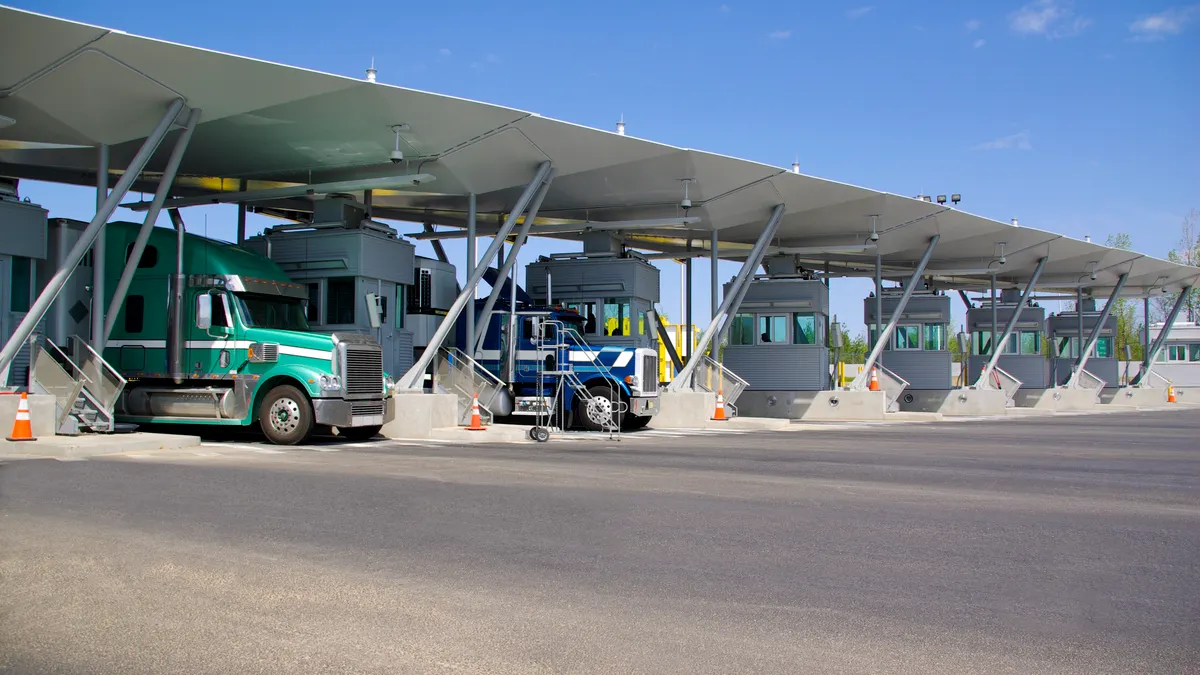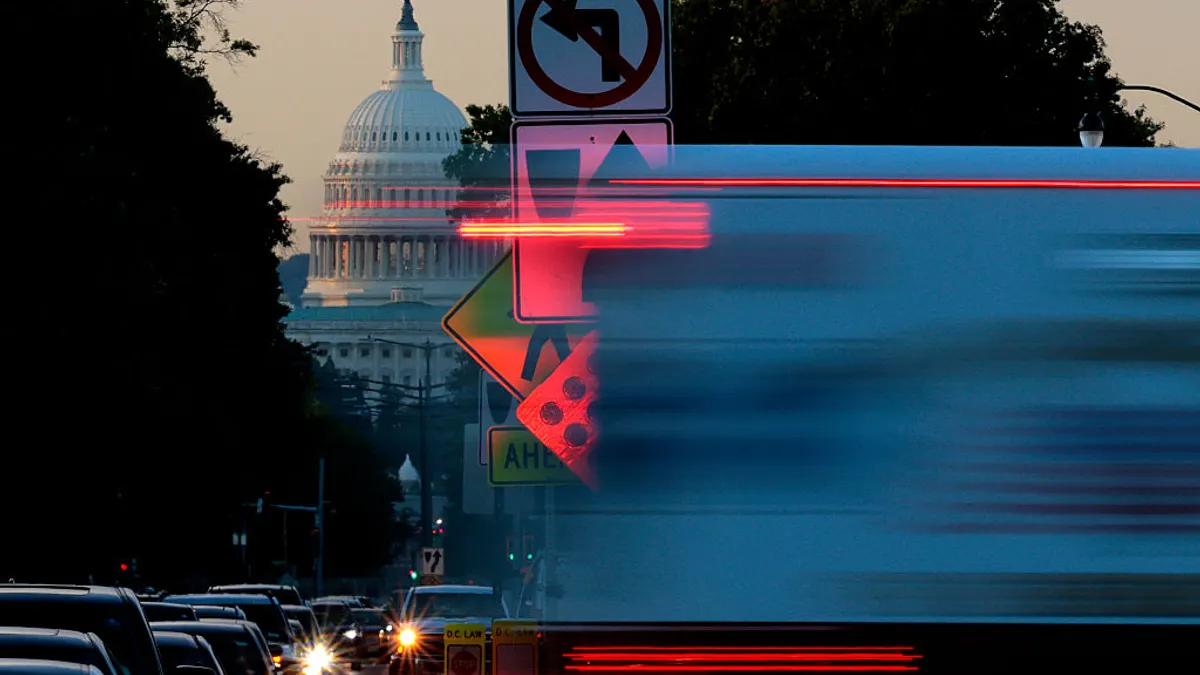As Yellow Corp.'s demise disrupts the LTL industry, and bankruptcy documents are showing what's at stake.
The trucking giant's financial troubles had already led to diverted freight and lessened capacity. But the company's bankruptcy declaration also reveals several details — like the scale of the firm's assets and the current state of its finances — that underscore the effects on its competitors, shippers and workers.
Here are seven highlights from court filings that stood out during an initial review.
1. Yellow assets present significant opportunity for competitors
Industry competitors are likely to swoop in as the LTL provider is looking to sell “all or substantially all” of its assets.
Yellow's national network spans more than 300 terminals, and includes 11,700 owned tractors, 34,800 owned trailers and six warehouses managed by Yellow Logistics. Competitors can submit statements of interest in the company's assets by 5 p.m. EDT Aug. 18 and bids by 5 p.m. Oct. 15.
Among those assets, the LTL provider's real estate portfolio may be among the most valuable, analysts told Transport Dive.
Yellow's 169 terminals represent approximately 10,000 doors. The facilities could provide premium locations in high-density areas such as Chicago and Los Angeles for competitors, according to Craig Decker, who leads investment banking activities across transportation, supply chain and logistics areas for Brown Gibbons Lang & Co.
“Many operators would like to expand in or into those regions, but they are limited due to any one or a combination of: lack of available land, high cost of the land, and zoning restrictions that preclude the development of an LTL terminal operation,” Decker wrote in an email to Transport Dive.
He also said certain terminal assets have been in place for a century and are held at book value on the balance sheet, but the property value alone may be multiples of that book value.
The value of the real estate means some firms may bid on the assets as a long-term financial investment, Jack Atkins, managing director of industrials and energy at Stephens, told Transport Dive.
“Just because a carrier buys a facility doesn't mean that they're going to immediately turn it on,” Atkins said.
2. Yellow shipments ‘evaporated’ after the Teamsters strike notice
Threats of a strike were among the factors that led shippers to divert loads in late July, contributing to Yellow’s downfall, according to the carrier.
Shipments sank from about 40,000 the day the International Brotherhood of Teamsters announced a strike notice to nearly zero by the end of that week, according to the company.
“Over the course of just four days, Yellow’s business had evaporated,” Matthew Doheny, Yellow’s chief restructuring officer and former board chair, wrote in a filing. “Yellow’s most loyal customers, facing the uncertainty of the threatened strike, dropped Yellow as a carrier.”
3. Biden administration was aware of potential impact
Yellow executives asked the Biden administration to intervene in its standoff with the Teamsters — and the company noted what was at stake.
"President Biden’s administration was specifically informed that the loss of Yellow would have significant negative economic impact, beyond just the loss of its $5 billion in annual revenue and 30,000 jobs," Doheny said in a filing.
In turn, the White House encouraged the union to negotiate. But even then, prolonged negotiations between the parties failed to move forward throughout the year.
As Yellow barreled toward bankruptcy, the company repeatedly accused the Teamsters of failing to negotiate and pinned blame on the union for the firm's demise. The company said the union delayed its implementation of a network overhaul, thereby costing the company over $100 million in profits.
The Teamsters have repeatedly countered those claims, saying the company has struggled for nearly two decades and that union members had “given up substantial earnings and pension securities to salvage Yellow from its corporate struggles.”
4. Unsecured creditors include transport partners, workers
Yellow owed money to several of its transport partners when it went bankrupt, leaving national brands on the firm's list of 30 top unsecured creditors when it went bankrupt.
The list includes BNSF Railway (which Yellow owed $6.3 million), Pilot Travel Centers (nearly $1.9 million) Penske Truck Leasing ($1.1 million) and Union Pacific Railroad ($1 million).
Additionally, the Teamsters and multiple local unions are creditors, too, but the amounts owed to them are not yet determined.
The union also said its concessions voluntarily cost workers $3.7 billion in wages and over $1.4 billion in pension benefit reductions since 2009. The union cited those metrics to blast the bankruptcy process, saying “rank-and-file Teamsters” constitute “Yellow’s largest uncredited creditor.”
5. Treasury Department remains a top stockholder
The Treasury Department holds a massive amount of debt from the company after it saved Yellow from a previous bankruptcy in 2020 with a $700 million pandemic-era loan.
Government reports from April and May suggest Yellow still owed approximately $729 million in U.S. Treasury loans earlier this year, and the carrier had paid $56.8 million in interest but just $230 in principal.
The large share of debt held by the U.S. Treasury will make the federal government a key player in the upcoming bankruptcy proceedings, particularly as the department retains some ownership in the company.
When the federal government provided Yellow with the COVID-19 loans, the Treasury took an approximately 30% stake in the company in return, consisting of 15.9 million shares.
The equity stake was worth $140 million at one point, according to a congressional report. But Decker told Transport Dive the stock's devaluation has rendered the Treasury's stake essentially worthless. The stock was $2.41 when markets opened the morning after Yellow's bankruptcy filing.
The government did get additional collateral in the deal, though, which could give it an advantage in the bankruptcy proceedings.
"Additionally, Treasury was granted third liens on existing company assets and first liens on newly purchased assets pledged as collateral," a pandemic audit reported.
6. Some Yellow workers remain employed
Even though Yellow shuttered operations on July 30 and conducted mass layoffs, a skeletal crew of workers remains.
Yellow and its affiliates have retained a group of about 1,650 workers to wind down the company's estates, according to a court filing. That will cost the company about $3.4 million per week in wages as the bankruptcy filings proceed, and their medical plans will cost $2.65 million per month.
Meanwhile, Yellow and its affiliates plan to honor severance pay, WARN Act obligations, health insurance, sick pay and other types of benefits, the company said.
A laid-off California dockworker is leading a class-action lawsuit against the company, alleging it failed to provide employees the required 60 days’ notice of layoffs.
7. A lack of cash affected company's bankruptcy path
Yellow and its affiliates needed more money to carry out the bankruptcy proceedings, so they arranged a financing facility to fund the wind-down of operations.
The debtors only had about $39 million of unrestricted cash on balance sheets, so they arranged a debtor-in-possession credit agreement for up to $142.5 million in new money.
In its bankruptcy declaration, Yellow said securing the funding was critical to maximizing the company’s estate value.


















